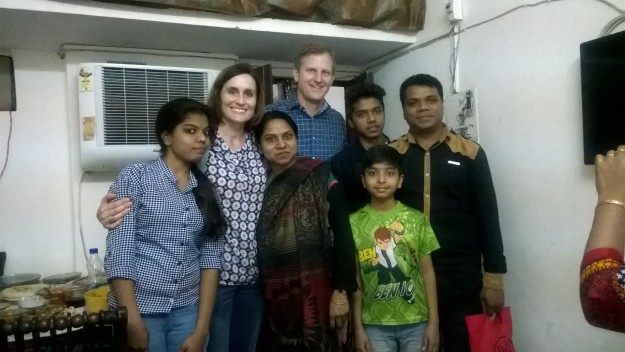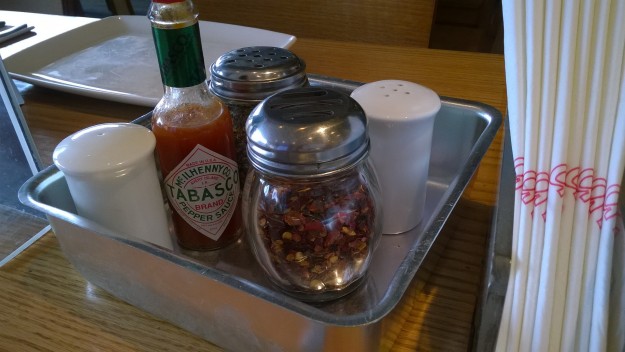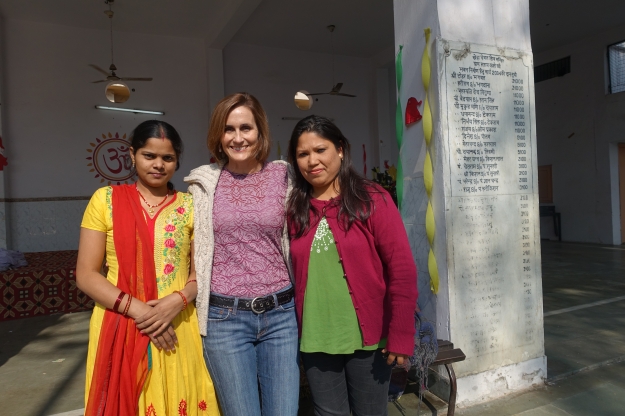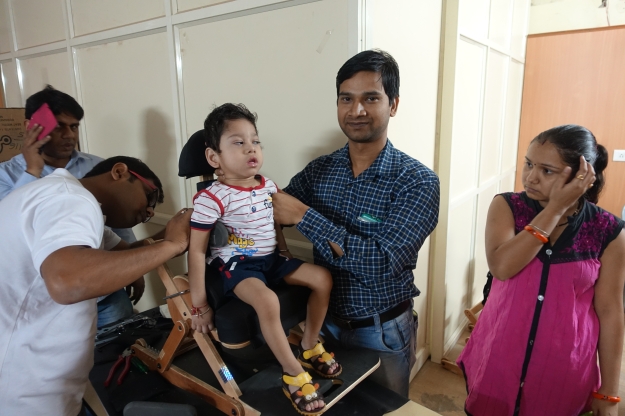The first weeks of driving around Delhi were a bit overwhelming to be quite honest. I saw children begging in the streets, mothers cooking little fires on the sidewalks, individuals sleeping by the roadside. I wondered how one could ever make a difference with just the sheer number of people in this city and country. Well, I found HOPE here in India and people that are making things happen. Their ambition, aspirations, and desires to help those around them has been an incredible journey for me. There are so many people bringing hope and I have chosen just a few of those stories to share.
Shilpa (on the left) began her quest of bringing HOPE to others when she met an individual with a heart condition. She has since established a non-profit organization that now offers educational opportunities to over 200 children and teenagers. She LOVES these children and works with their parents that live a very transient work life, moving from job to job, in helping the kids obtain an education. The girl in blue on the right is standing in front of her makeshift home that leans right up against one of the buildings where a basement is rented to offer education. If children old enough to attend school have to stay home and babysit little toddlers, Shilpa says, “bring them along”. She is a complete inspiration to me and I love what she is doing here.
Thangdei (on the left) is a nurse by profession but was asked to assist with a refugee non-profit in a rag picking community. Her husband was not happy about it as it meant she makes next to nothing but she told him, “They need me. It’s where I should be.” Nine years later she is a light in this community. Everywhere I walked with this woman, the people loved her and welcomed her. She runs a school for about 78 children trying to transition them into government school. Because they are refugees with no paperwork, the parents have no ability to open a bank account. Their homes lack any type of secure location to keep money, so Thangdei has started a little savings account program for them. They will bring her their few rupees each week and she logs it in a book (to the right) and has an account where she deposits the money for them. She is their bank, their teacher, their voice in India and their hope for the future.
It all started for Ravi (pictured on the right) in 2007 when he saw a child and a dog digging through the same pile of garbage to find some food. At that moment he decided he was going to spend his energy serving those less fortunate. That has led to him creating a “home” for abandoned adults. There is no government program to take care of the elderly here in India — it’s supposed to be the family. Well when those children decide they don’t want to take care of an aging parent’s medical bills or a brother’s mental issues, they get abandoned. Every individual that shows up whether it was finding them personally living on a road side or the police dropping them off, gets Ravi’s mobile number tattooed on their arm so regardless of what happens, they can find a “home” to sleep and get fed. He currently houses and feeds 200 abandoned adults and has over 3,000 individuals in India that have had his number placed on their arm. He is bringing HOPE to so many that find themselves with no other place to turn.
Kushal, a corporate executive, met a girl with a need for a liver transplant. In order for such a transplant to be successful, she would need to live in a cleaner environment. That is not possible, so no transplant. The girl is now 16 years old and doesn’t know how much longer she will live but she wakes up every day happy. Kushal shared how her example has inspired him, “If she can wake up happy every day, then so can I.” So, Kushal brings happiness not only to himself but many others now as he continues his corporate job and on the side runs a non-profit school that fills in a gap in his area where children above grade 5 have no educational opportunity without parents paying for it. He is not only bringing HOPE for a brighter future through education but he has literally saved lives. The picture of the children above (the child in green) has literally been saved by the health checkup offered at the school by finding a hole in the heart and having it repaired. He runs one of the best non-profit organizations I have seen here and he is passionate about his efforts.

Sujata, Kavitha and Dr. Singh (the three women pictured on the outskirts of the photo) let me into their world every week as I volunteered at their non-profit organization. In the Hindu culture, if you have a baby that is born physically or mentally handicapped, there is a great stigma that falls on the parents due to the belief that they brought it on themselves through their own actions. As a result, many children are abandoned or never allowed to leave their little home so that others in their community do not know about it. This non-profit provides a place where many teenagers and young adults that have been living in an orphanage and are not capable to attend the government school have a place to go to each day. When summer comes, they don’t want days off — they want to keep coming as it gives them stimulation, HOPE and something to do. I have been greatly blessed to rub shoulders with these women who teach, run and fund this school as well as the students that are incredible in their own unique, special way.
Dilreen — the woman in the middle — is bringing hope to a slum community that has over 300,000 people living in it with NO running water, no sewage system, very few children attending school, and young women looking for something to do with their days. So, this incredible woman works with an organization that has set up a small school in the back part of this slum. Yes, I had to walk through many tiny walkways to get there — past the animals digging through the trash and the evident smell that toilets are lacking in this community. I loved every minute of it because this lady is bringing hope here to so many. Not only do they provide educational opportunities to get children able to test into the government school, but they also provide vocational training to women that want a skill. They have more women than sewing machines and room to teach tailoring classes. But above all, they have the only toilet in the place. It is kept locked and is for student use only as she is trying to teach the children hygiene — the proper way to use a bathroom, wash your hands, be clean. Since there is no running water, she has someone standing in the water line with jugs (notice the picture to the right) for when the water trucks come each morning so they can fill the toilet with water to be used each day. Cleaning a toilet will never sound like a chore again to me.
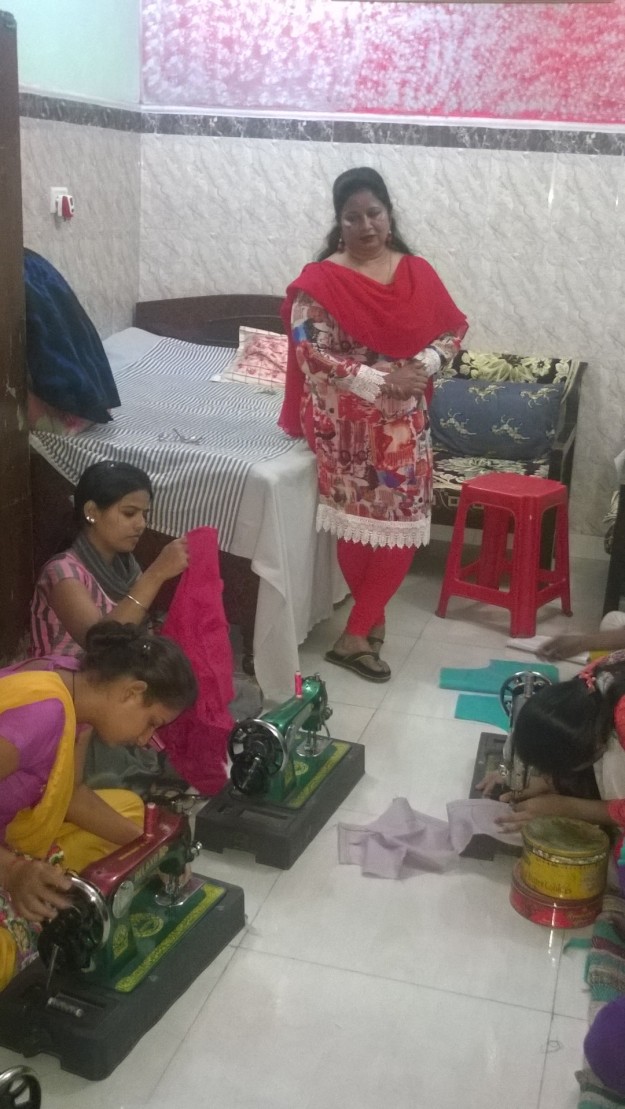 Rosie — pictured standing in the center– opens her home every day to help teach young women to learn a skill. The size of her living space is a small room but she straightens her bed and pulls out the sewing machines Monday-Friday for about twenty women (ten in the morning, ten in the afternoon) to come and learn a useful skill. Many young women are not allowed to go out and find a job and some are not even allowed to leave their little neighborhood area. So, these women look to find a skill they can do in their home — piece work and tailoring which can help bring a little extra money into the home. More than the money, though, is the HOPE it brings to know they can create something beautiful, that they have skills and knowledge that is beneficial. Rosie opens her home on Saturdays as well to teach a class on women’s issues to those that are interested in the community.
Rosie — pictured standing in the center– opens her home every day to help teach young women to learn a skill. The size of her living space is a small room but she straightens her bed and pulls out the sewing machines Monday-Friday for about twenty women (ten in the morning, ten in the afternoon) to come and learn a useful skill. Many young women are not allowed to go out and find a job and some are not even allowed to leave their little neighborhood area. So, these women look to find a skill they can do in their home — piece work and tailoring which can help bring a little extra money into the home. More than the money, though, is the HOPE it brings to know they can create something beautiful, that they have skills and knowledge that is beneficial. Rosie opens her home on Saturdays as well to teach a class on women’s issues to those that are interested in the community.
I could share MANY more stories of people that have inspired me. Now, three years later, I don’t drive the streets of Delhi feeling hopeless about the things I see. Instead, I think of the man who follows street kids home to meet their parents and work with them to get them enrolled in school, I think of the smiles on the faces of women as they work to create those clothes that will say “made in India.” HOPE is everywhere and good things are happening. Thank you India for the experiences that have inspired me to look for ways to bring hope to others, to never forget that helping one person can lead to helping many.

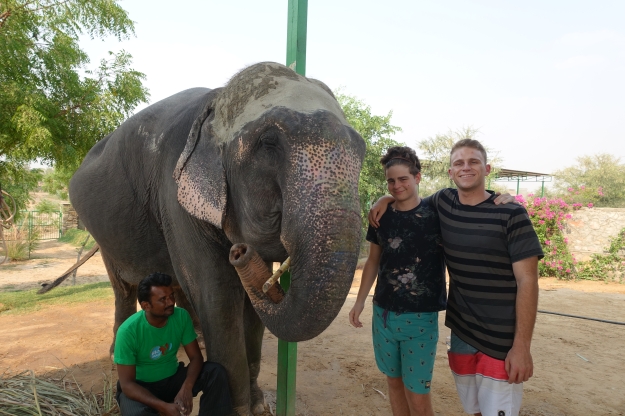
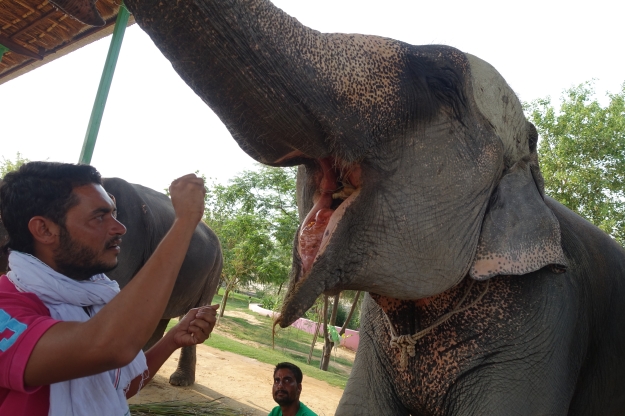































 Rosie — pictured standing in the center– opens her home every day to help teach young women to learn a skill. The size of her living space is a small room but she straightens her bed and pulls out the sewing machines Monday-Friday for about twenty women (ten in the morning, ten in the afternoon) to come and learn a useful skill. Many young women are not allowed to go out and find a job and some are not even allowed to leave their little neighborhood area. So, these women look to find a skill they can do in their home — piece work and tailoring which can help bring a little extra money into the home. More than the money, though, is the HOPE it brings to know they can create something beautiful, that they have skills and knowledge that is beneficial. Rosie opens her home on Saturdays as well to teach a class on women’s issues to those that are interested in the community.
Rosie — pictured standing in the center– opens her home every day to help teach young women to learn a skill. The size of her living space is a small room but she straightens her bed and pulls out the sewing machines Monday-Friday for about twenty women (ten in the morning, ten in the afternoon) to come and learn a useful skill. Many young women are not allowed to go out and find a job and some are not even allowed to leave their little neighborhood area. So, these women look to find a skill they can do in their home — piece work and tailoring which can help bring a little extra money into the home. More than the money, though, is the HOPE it brings to know they can create something beautiful, that they have skills and knowledge that is beneficial. Rosie opens her home on Saturdays as well to teach a class on women’s issues to those that are interested in the community.